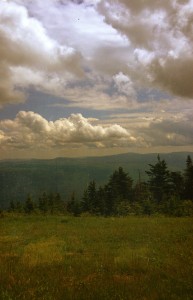Position, Measurement and Observation (Part 5)
By Asher Crispe: October 17, 2013: Category Inspirations, Quilt of Translations
Prologue to a Theory of Law
 While the distinction between mountains and hills might seem self-evident at first, there is nothing quite as deceptive as that which hides in plain sight. ‘Are not hills simply small mountains?’ we ask with child-like innocence. Might we be better served by a painter’s eye that searches for the secrets that crawl into the ‘obvious’ and turn unthinkable or unthought ‘clarity’ into a bewildering riddle of a landscape? Certainly hills have the capacity to conjure the abstract from a wave just as the mountains do. The difference is one of magnitude. Hills represent minor variations and oscillations in the fabric of reality. The fluctuations are softer, gentler, less dramatic.
While the distinction between mountains and hills might seem self-evident at first, there is nothing quite as deceptive as that which hides in plain sight. ‘Are not hills simply small mountains?’ we ask with child-like innocence. Might we be better served by a painter’s eye that searches for the secrets that crawl into the ‘obvious’ and turn unthinkable or unthought ‘clarity’ into a bewildering riddle of a landscape? Certainly hills have the capacity to conjure the abstract from a wave just as the mountains do. The difference is one of magnitude. Hills represent minor variations and oscillations in the fabric of reality. The fluctuations are softer, gentler, less dramatic.
In the previous article, we compared the mountains with the masculine and valleys with the feminine. Now we can reinscribe this order within the logic of both mountain and hill landmasses. The mountains with their more pronounced and pointed peaks and greater physical stature retain the masculine mode of being while the shorter and more rounded arc of the hills alludes to the relative feminine aspect. The hills represent a smaller ‘standard deviation’ from a ‘flat’ average sense of objective reality but have a longer period of transition than their mountain counterparts.
The thematic coupling of mountains and hills gets frequently recycled in the Hebraic Bible. In Psalms 114:6 we find the poetic expression “the mountains [that] skipped [danced] like rams; the hills like young lambs.” Normal, everyday movement sticks to a routinized gait, while skipping and dancing signal erratic behavior whose chaotic quality makes it less predictable. No continuity is maintained in jumping from position to position. In other words, we are introducing non-linearities into the picture.
Why the animal analogies? Amongst other things, rams embody greater power than lambs. They can leap further and are more proactive than their more passive, weaker counterparts. Thus, when a person experiences an abrupt and intensive shift in the distortion field of human perception, when the world suddenly changes unexpectedly, then we can mark it down on the graph as a spike. However, when the variations progress gradually (without steep slopes or cliffs of any kind), then we are rolling over the hills. We can sheepishly surmount them as they are less taxing obstacles.
Both mountains and hills open up a discussion of the vertical dimension of our world–that is: they connote hierarchies. Ordinarily we would think that rams and lambs leap about on the mountains and hills but in the verse above, this characteristic is applied to the space itself. The object acquires the qualities of that which acts upon the object. The mountains and hills take on the energetic values of these two animals and their capacity for displacement. Fluctuations in the wave patterns reveal them to be dancing or jumping around. More subtle destabilizations come from the act of ‘observation as measurement’ injecting play into what were ordinarily perceived as stable hierarchies.
In the writings of the Tzemach Tzedek, he maintains (in line with kabbalistic tradition) that the mountain-hill juxtaposition is (at least) twofold in the psyche or soul. It works as follows: we experience an inner world constituted by mental representations within the subjective sphere, and an outer world that we act upon and which acts upon us. This objective sphere receives a condensation of our inner world–emotive energy that is a distillation of thought which gets channeled through self-expression to the outside.
The first mountain-hill pairing is the marriage of chochmah (intuition) and binah (understanding). What this tells us is that the jump or discontinuity of thought associated with intuitional blasts of insight packs a greater punch (ram) than the methodical reasoning that takes small steps in its procedure within understanding (lamb). Given its modus operandi of ‘learning one thing from out of another’ (maivin davar m’tok davar) that dominates understanding, it is not surprising that its movement within a pre-existing system of thought works more incrementally. The development of an idea at this level tends to manifest as one thought following another through slightly milder transitions.
Over and against this configuration, we can assess the emotions (middot) as mountains of intensity that swell inside us only to be slightly flattened and compressed to fit within the protocols of social interaction as they announce themselves in the world via various modes of self-expression (malchut or ‘kingdom’). In short, when we speak about how we feel we tend to ‘tone it down a bit.’ Mountains morph into hills.
An alternative explanation (also brought by the Tzemach Tzedek) assigns the mountain-hill comparison solely to the emotions which are now broken into two levels. Chassidic philosophy often draws our attention to the origin of emotions within the incubator of the mind. Our states of consciousness, particularly when we reflect upon them and become more self-aware, fire up emotional responses. However, these emotions are a byproduct of our intellect and thus constrained by rationality. When the state of mind dissipates or the raison d’être fades away, the emotions that were born from out of these initial thought processes also run out of gas. Likewise, when we assess our emotions they can be compared to the reasons that engendered them and therefore be questioned as to the appropriateness of the response. They make sense given their underlying reasons. They are justified and conditioned by the mind.
Lest one think that all emotions are rational in their genesis, we also discover another more primordial strata of emotive experience, one which transcends the intellect altogether. Stirring from deep within the unconscious mind, there are emotional inclinations that parachute into our field of conscious without accountability in terms of rationality. They are the untempered pure emotions which cannot be addressed in the court of intellectual appeals. As oscillations, the mountains are the mega-intense, super-rational emotions while the hills are the more modest, rationally proscribed peers. Both contribute to the play of the vertical–the ‘deviations’ and even overthrow of existing hierarchies. The primary shaking of these hierarchical figures occurred at the time of the giving of the Torah on Mount Sinai according to the commentary of the Metzudat Dovid. Itself a new reference for the vertical dimension of reality, (height evokes a measure of value or profundity, etc…), the Sinaitic revelation is located on the humblest of all mountains.
 What is the significance of this? A humble mountain would be a limited or minimal hierarchy–just enough height to differentiate between levels but without over exaggerating the distance between them. It strikes a balance between an imposing mountain cliff which would be unscalable (higher perspectives being inaccessible to those lower down) and an undifferentiated plane of existence where all are on the same footing regardless of our actions. Sinai–the humblest of mountains—promised both difference and equality. The giving of the Law in this place informs us throughout the ages than the ultimate meta-legal index (Torah) exhibits the potential to shake up all of the other existing hierarchies of the world (be they mountains or hills, global or regional, general or specific, super-rational or rational).
What is the significance of this? A humble mountain would be a limited or minimal hierarchy–just enough height to differentiate between levels but without over exaggerating the distance between them. It strikes a balance between an imposing mountain cliff which would be unscalable (higher perspectives being inaccessible to those lower down) and an undifferentiated plane of existence where all are on the same footing regardless of our actions. Sinai–the humblest of mountains—promised both difference and equality. The giving of the Law in this place informs us throughout the ages than the ultimate meta-legal index (Torah) exhibits the potential to shake up all of the other existing hierarchies of the world (be they mountains or hills, global or regional, general or specific, super-rational or rational).
Our reflection on the ‘vertices’ of judgement will continue in Part Six.
http://www.interinclusion.org/inspirations/position-measurement-and-observation-part-6/
http://www.interinclusion.org/inspirations/position-measurement-and-observation-part-4/
Position, Measurement and Observation (Part 5),






















;)
;)
;)
;)
;)
;)
;)
;)
;)
;)

“The giving of the Law in this place informs us throughout the ages than the ultimate meta-legal index (Torah) exhibits the potential to shake up all of the other existing hierarchies of the world”
I think this potential stems from its inherent friendliness towards all people no matter if they’re Jews, Non-Jews, known or unknown. But there must be a difference to all other laws besides that Torah is given by G-d and all others are devised by humans. This must be its mystical side like the hebrew letters.
Another thing is that Torah, the Hebrew Bible only makes sense if properly translated or better yet read in Hebrew and I just found out that everything that’s left out in the Bible like detailed descriptions and commentary can be found in the Talmud and the Kabbalah. No wonder that the enlightened humanist western world rejects the Bible as a relic of a superstitious, pre-scientific age which used religion as a means to enslave the dumb masses and the modern enlightened humanist Christian world abuses and misinterprets the Hebrew Bible as a precursor for their own “evolved” (meaning better) religion.
The deeper I delve into Judaism the more interested and enthusiastic I get since Judaism makes sense to me, though I still have troubles with Mitzvot like circumcision (I’m a child of Noah btw). I think it’s the only Mitzvot I’m having trouble with. But I also think that it’s your tradition and I really can’t and don’t want to judge. I am considering to learn Hebrew for a better understanding of Judaism. Thank you for your attention.
Thank you for your comment! A radically altered (and improved) picture does emerge once all of the commentary dimensions (particularly from Kabbalah) are added into to explain the core texts.
Circumcision is one of the ideas (which I would agree with you) at face value seems to cause people to recoil. I would like do a series of articles on the topic at some point…but for now, let me just suggest that the inscribing of a ‘cut that binds’ is referred to as the ‘ot’ [sign] of the convent meaning that we are dealing with semiotics. The body is the semiotic body–a body made up of signs (letters, units of meaning–the bioinformatic body of DNA codes and the like). Moreover, the procreative organs symbolically represent all forms of creative expression and connectivity in Kabbalah. Thus, the key to decoding circumcision stems from viewing it as the revealing of the sign which links the signifier to the signified (figuratively and relatively a masculine-feminine pair). Anyway that is the teaser trailer for a much longer discussion…
All the best, Asher